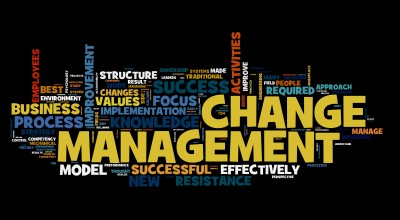 One of the biggest challengers for project managers might not be something you would immediately think. When people think of a project’s major hurdles, they usually think of bringing the most qualified team members together or whether the project is tackling deadlines at a good pace.
One of the biggest challengers for project managers might not be something you would immediately think. When people think of a project’s major hurdles, they usually think of bringing the most qualified team members together or whether the project is tackling deadlines at a good pace.
Success at Determining Success
In fact, simply determining whether a project has been successful or not is one of the core challenges facing project managers today. Some projects bring together top talent and complete the project well ahead of schedule, but the work fails to live up the client’s expectations. Other projects exceed the client’s expectations and are handed in on time but fail to work within budgetary constraints.
A project manager’s first assignment – after finding out exactly what the client wants and assembling the best team available to accomplish that goal – is getting all team members together and hammering out a checklist for project success. Figuring out how to prioritize success factors like the project’s ability to stick within the outlined budget, timeframe and quality control standards are essential benchmarks to set early on in the project’s life.
Getting these standards of success clear early and often is extremely important for small businesses for several reasons. If the project is deemed a success, the project’s particulars are going to be emulated later by future project managers. Think about it – if you’ve incorrectly set parameters of success that are incompatible with the company’s ethos, then you’re emulating failure and disappointing your clients and shortchanging your team down the road.
Survey from Several Sources
It’s important to draw criticism of a project’s success or failure from multiple streams to ensure objectivity. Project managers therefore should be surveying management, team members, the client and the client’s customers to determine whether all parties had their expectations met or exceeded.
Obviously, the format of these surveys is going to vary based on the party that you’re surveying. A project manager finding out from individual team member’s how they felt about the project is probably going to take place in a more informal, traditionally corporate environment. Getting feedback from customers, conversely, might take place over the phone or through an online questionnaire.
Ingredients for Project Success
Project managers, maybe to their detriment, focus on hitting a time-based measure of success – was the project within the stated timeframe? While that’s an important consideration, it’s not the only one.
Under Budget and High ROI
A project that’s weeks ahead of schedule but that entails loads of botched back-end work and numbers way over budget is never going to please the client (or anybody else). A project manager should weight the important of finishing a project under budget and the benefits of extending more ROI to the client.
Quality Control Measures
If project mangers had their say every project would be completed weeks ahead of schedule, deliver unprecedented ROI, leave all team members feeling great about their contributions, and delivered wrapped in a bow to the client.
That vision is, of course, unrealistic, which is why project managers use a number of metrics to determine a project’s success. Like every other measure of success, agreeing on quality control measures that work in unison with budgetary and time constraints should be a step that all project managers take before setting out on the project itself.
That said, project managers shouldn’t underestimate the important of high satisfaction from clients, the clients’ customers and team members. It’s important to have an ongoing gauge of everyone’s satisfaction and even how well this project meshes with the company’s underlying ethos and team development for future projects.
 In order to run a successful business, you need effective project management in place to get the job done. Business projects can range from staffing and management to products and services. Setting up the building blocks of an establishment requires project management in so many ways. Although it may seem as though the only position that should be concerned with this subject matter are project managers, it is important that everyone know various methods and tools used to effectively carry out projects. Prioritizing and planning are the crucial practices that will get your project management team in the right place to make the business thrive. With these tips you are sure to stay on task and get projects completed more effectively.
In order to run a successful business, you need effective project management in place to get the job done. Business projects can range from staffing and management to products and services. Setting up the building blocks of an establishment requires project management in so many ways. Although it may seem as though the only position that should be concerned with this subject matter are project managers, it is important that everyone know various methods and tools used to effectively carry out projects. Prioritizing and planning are the crucial practices that will get your project management team in the right place to make the business thrive. With these tips you are sure to stay on task and get projects completed more effectively. It used to be that creative projects went from brainstorming to beta testing and release in the most efficient way possible by putting all team members in the same place for the duration of the project. This model, however, might not be as efficient or desirable in today’s interconnect age.
It used to be that creative projects went from brainstorming to beta testing and release in the most efficient way possible by putting all team members in the same place for the duration of the project. This model, however, might not be as efficient or desirable in today’s interconnect age.


 The success of project management relies heavily on a manager with vision. A person in this position must be able to see the much larger picture of an element and prioritize communication efforts effectively. Effective project managers have the ability to lead by:
The success of project management relies heavily on a manager with vision. A person in this position must be able to see the much larger picture of an element and prioritize communication efforts effectively. Effective project managers have the ability to lead by: